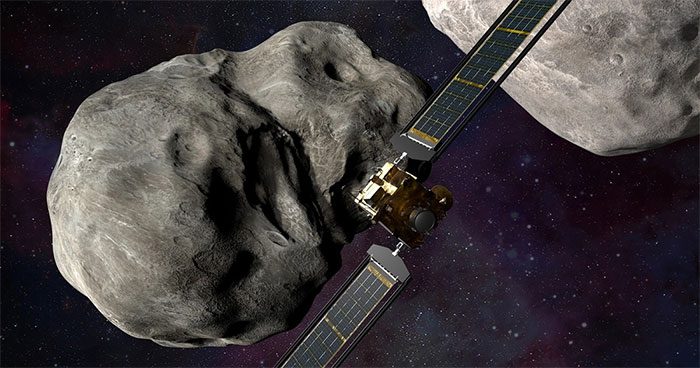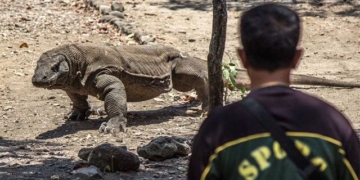In the first test of a system designed to prevent asteroids from colliding with Earth, conducted in September 2022, NASA’s DART spacecraft attempted to deflect a double asteroid by crashing into the asteroid Dimorphos at the midpoint between two rocks, causing debris to scatter into space and altering the trajectory of this rectangular-shaped asteroid slightly more than previously calculated.

NASA’s DART spacecraft collided with the asteroid Dimorphos. (Image source: NASA).
This information was released by scientists on March 1 in the most detailed report about NASA’s experiment using a spacecraft to change the orbit of an object, which utilized kinetic energy directed to push the celestial body off its path, sufficient to keep Earth safe.
Planetary scientist Terik Daly from the Johns Hopkins University Applied Physics Laboratory in Maryland, the lead author of one of the studies on DART published in the journal Nature, stated: “The DART test was an astonishing success. We now know that we have a reliable technique to prevent an asteroid collision if we ever need it in the future.”
During the experiment on September 26, 2022, the DART spacecraft collided with Dimorphos, an asteroid with a diameter of 150 meters, located about 11 million kilometers from Earth, at a speed of 22,530 km/h.
Dimorphos is the moon of Didymos, which is considered a near-Earth asteroid and has a shape resembling a spinning top in space with a diameter of about 780 meters. Both asteroids pose no threat to Earth.
Planetary scientist Cristine Thomas from Northern Arizona University, the lead author of another study also published in Nature, explained: “We are looking to change the duration of Dimorphos’s orbit around Didymos by directly impacting Dimorphos.”
According to scientist Thomas, the impact and the momentum from the debris ejected from the collision reduced the time Dimorphos takes to orbit Didymos by 33 minutes. This also caused Dimorphos to orbit slightly closer to Didymos.
Before the impact, the time Dimorphos took to orbit Didymos was 11 hours and 55 minutes. This time is now 11 hours and 22 minutes. The success criterion set was to change it by at least 1 minute and 13 seconds.
The scientists also provided detailed calculations on how the impact occurred. Scientist Daly noted that first, one of the solar panels of the spacecraft collided directly with a large rock of the celestial body, near the impact site. Next, the second solar panel grazed another large rock. Ultimately, the spacecraft’s frame impacted roughly between the two rocks. Scientists believe the collision destroyed these two rocks. After the impact, debris from the surface was ejected for a period. Satellite and telescope images revealed a significant amount of this material.
The study also clarified details such as the exact location of the collision and the angle of impact.
The DART mission, with a cost of $330 million, took 7 years to develop.
According to scientist Daly, there are currently no asteroids threatening Earth; however, humanity needs to prepare for such a scenario in the future.





















































